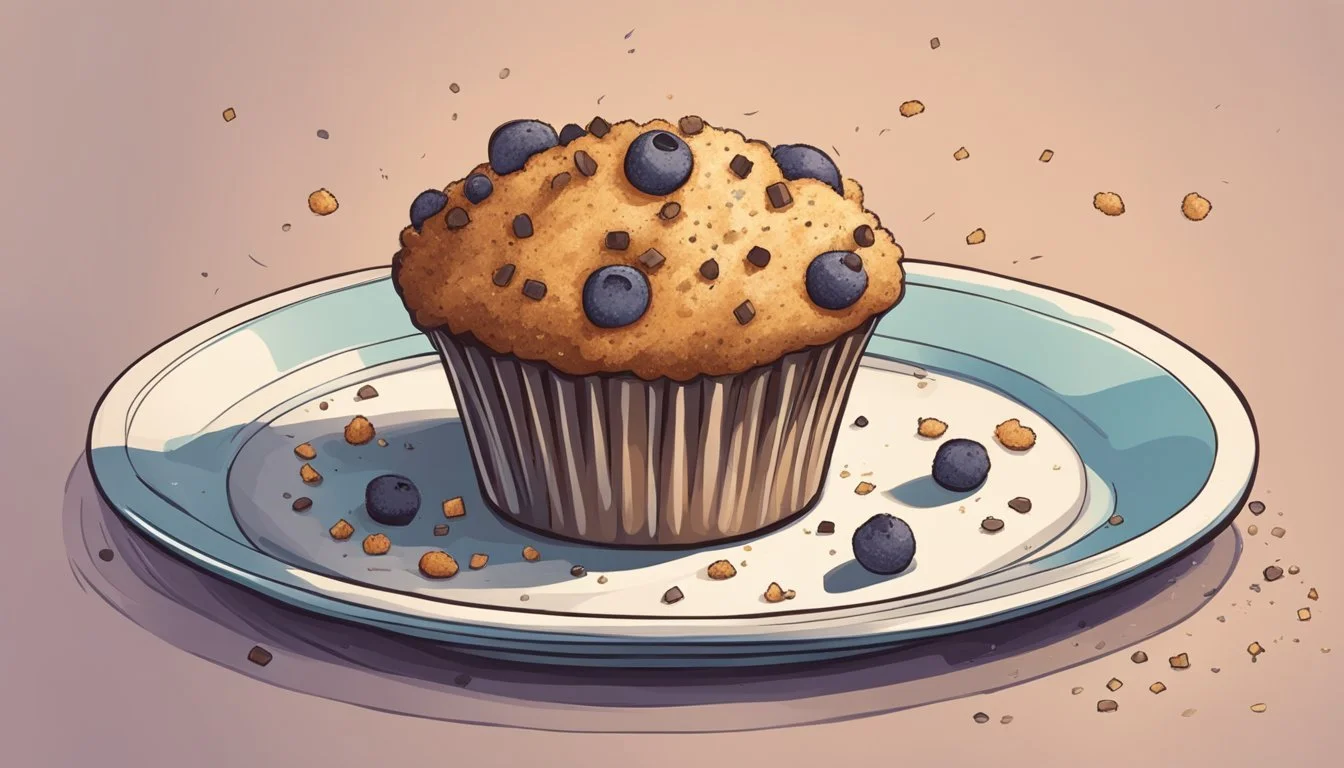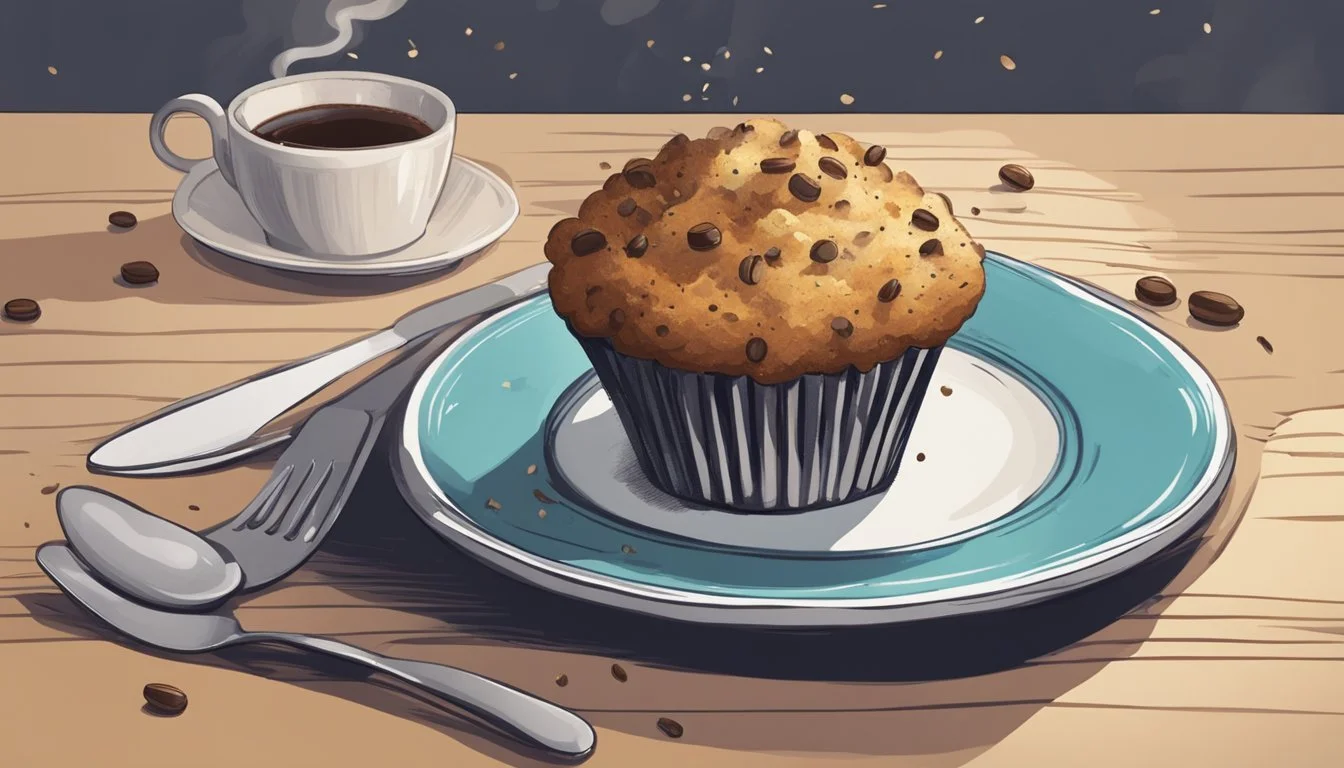How Do You Eat a Muffin?
Mastering the Art of Enjoying This Treat
Eating a muffin seems straightforward, yet there are numerous approaches that can enhance the experience. Across different cultures and individual preferences, methods vary. Some may prioritize convenience, while others might focus on savoring each bite. The classic muffin represents a versatile food item that can be enjoyed as a quick snack or a complement to a leisurely breakfast or coffee break.
Muffins come with their own etiquette and best practices that can alter their taste and texture. For instance, heating a muffin can release its aromatic flavors, but it needs to be done properly to prevent a soggy or uneven texture. An effective way to warm a muffin is by placing it on a microwave-safe plate or napkin and heating it briefly. This ensures that the muffin absorbs heat evenly, enhancing its flavor and softness.
While some eaters prefer to consume the entire muffin, others may enjoy focusing on certain parts, such as the often-coveted muffin top. This approach aligns with the view that the top provides the most satisfying crunch and concentrated flavor. Regardless of individual preference, the technique and sequence of enjoying a muffin can significantly influence one's culinary satisfaction.
Choosing the Right Ingredients
Creating the perfect muffin begins with the selection of high-quality ingredients. This section will guide the reader through the essential ingredients for muffin recipes, focusing on achieving the best flavor and nutritional value.
Selecting Flour and Sugar
Flour: The base of any muffin recipe is the flour. All-purpose flour is commonly used due to its ability to create a desirable texture; however, for a lighter muffin, pastry flour can be an excellent choice due to its lower protein content.
Sugar: The type of sugar used can affect the sweetness and moistness of the muffin. Granulated sugar provides a clear sweet taste, while brown sugar, with its molasses content, can add a rich, moist texture and a deeper flavor.
The Role of Eggs and Dairy
Eggs: Eggs are crucial for binding the ingredients together and for lending structure to the muffin. Using whole eggs can contribute to the overall richness.
Dairy: Milk, especially whole milk, offers moisture and richness to the muffin batter. When using unsalted butter, one can control the amount of salt in the recipe, allowing the other flavors to shine without overpowering the muffin.
Leavening Agents and Add-ins
Leavening Agents: Baking powder is often employed as a leavening agent to achieve a light and airy texture. The precise measurement is critical — too little and the muffin will be dense, too much and it could taste bitter or the muffin may rise and then collapse.
Add-ins: Ingredients such as chocolate chips, nuts, or fruits like blueberries (how long do blueberries last?) or chopped apple can be included in the batter. These mix-ins should complement the basic muffin flavor without overwhelming it.
Customizing Flavors
Spices and Extracts: Subtle flavorings such as cinnamon, vanilla extract, or nutmeg can elevate the taste profile of a muffin, lending a warm and inviting aroma.
Fruit: Berries and fruits are popular for add-ins, with blueberry, cranberry orange, and banana nut amongst the favorites. They not only contribute flavor but also nutritional value.
Chocolate and Nuts: Chopped nuts and chocolate pieces can enhance the texture as well as contribute to the muffin's sweetness and flavor.
By focusing on the quality and compatibility of ingredients, one can craft a muffin recipe that balances nutrition and taste, ensuring a delightful result.
Preparation Techniques
Perfecting the art of muffin making requires a mastery of preparation techniques. From the initial blend of ingredients to the final check of doneness, each step contributes to the texture and flavor of the final product.
Mixing and Measuring Basics
Muffin batter depends on precise ratios of ingredients; using too little or too much can lead to a dense or unbalanced texture. Begin by measuring dry ingredients such as flour, sugar, and baking powder with care, leveling off measuring cups for accuracy. Mixing should be done until just combined, as overworking the batter can result in tough muffins.
Folding in Ingredients
When incorporating additives like blueberries, chocolate chips, or nuts, a gentle folding technique is vital. This method prevents crushing the berries or creating streaks in the batter. Fold in such ingredients with a rubber spatula using a light hand, aiming for a homogeneous distribution without over-mixing.
Proper Baking Methods
Preheat the oven before baking to ensure a consistent cooking environment. The batter should be evenly distributed among the cups of a baking sheet, typically filled to two-thirds to avoid spillage as the muffins rise. If the batter is too large, it may overflow and lead to an undesired shape and density.
Checking Doneness
Assessing whether muffins are fully baked is important to avoid an undercooked center or an overdone exterior. Insert a toothpick into the center of the muffin; it should come out clean or with few crumbs. Muffins are typically done when the top of the muffin is golden brown. Remember that baking times can vary based on the type and size of the muffin, so keep a watchful eye.
Serving Suggestions
When one seeks to fully enjoy a muffin, the manner in which it is served can greatly enhance both its flavor and texture. The following subsections provide guidance on methods for removing muffins from the pan, toasting and heating, and adornment with various toppings and spreads.
Extracting from the Muffin Pan
To preserve the integrity of each muffin, a careful approach to extraction is necessary. One should wait for the muffins to cool slightly before using a butter knife or a silicone spatula to gently loosen the edges. For a muffin pan, it's beneficial to use a cutting motion around the perimeter of each muffin before lifting it out to maintain its pleasing texture.
Toasting and Heating
Temperature control is paramount for achieving the desired warmth and crispness without compromising the muffin's moisture. For an English muffin, splitting it with a fork creates nooks and crannies that toast well in a toaster oven or on a skillet. Set the toaster oven or skillet to medium heat and toast each half until it reaches a light golden brown; this will enhance the taste and add a contrast in texture. A regular muffin can be reheated in the microwave on a microwave-safe plate for a short period, ensuring it remains soft and warm.
Adding Toppings and Spreads
Variety in toppings and spreads can transform a simple muffin into a delightful treat. For the top of the muffin, one might consider adding:
Butter: A classic choice, it melts into the warm muffin for a smooth texture.
Fruit and Jam: A layer of jam or fresh fruit can complement the muffin's taste with a burst of sweetness.
Cheese and Bacon: When using a broiler, placing cheese and bacon on an English muffin before broiling it can create a savory, melted topping.
One can also experiment with other toppings such as honey, nut butter, or chocolate chips, depending on the muffin's flavor profile and personal preference.
Muffin Storage and Freshness
Proper storage extends a muffin's freshness, retaining its moist texture and preventing it from becoming crumbly. Utilizing airtight containers, understanding reheating techniques, and utilizing freezing options are crucial for maintaining a muffin's quality and nutritional value.
Storing Freshly Baked Muffins
After baking, muffins should be allowed to cool completely to prevent condensation from making them soggy. For best results, they should be placed in a single layer inside an airtight container. To help absorb excess moisture, line the container with paper towels both below and above the muffins. Saltine crackers can also be added inside the container as a desiccant to help absorb moisture.
Reheating Tips
To recapture the warmth and texture of freshly baked muffins (how long do freshly baked muffins last?), a brief stint in the oven or toaster oven is most effective. They can be reheated at a moderate temperature of about 350°F for a few minutes until warmed through. If time is of the essence, one can use a microwave sparingly; 10-15 seconds should suffice to avoid making the muffin overly soft or altering its crumb structure.
Freezing for Later Use
Muffins can be frozen to extend their shelf life. Once completely cooled, wrap them individually in plastic wrap, followed by a layer of aluminum foil to safeguard against freezer burn and to preserve their nutrition and texture. When stored at consistent freezer temperatures, muffins can be kept for up to three months. To thaw, one should place them in the refrigerator overnight or warm them in an oven or toaster oven until sufficiently thawed and heated.
Health and Dietary Considerations
When considering muffins as part of one's diet, key points include their nutritional content, options for those with dietary restrictions, and how to integrate them into a balanced diet without compromising health.
Nutritional Information
Muffins can vary widely in their nutritional content, generally containing calories, carbs, sugar, and fat. Here's a typical nutritional breakdown for a standard muffin:
Calories: Range from 200 to 500
Carbs: Approximately 30-60g
Sugar: Can be as high as 30-40g, especially in store-bought muffins
Protein: Generally around 5-8g
Fiber: Usually 1-3g, depending on the ingredients used
Fat: Can range from 5-20g
Moreover, certain types of muffins may provide vital nutrients such as selenium, manganese, and several B-vitamins.
Alternatives for Dietary Restrictions
For individuals with specific dietary needs, the market offers alternatives:
Vegan: Egg-free and dairy-free, using substitutes like flaxseeds or applesauce for binding and almond milk or oats milk for dairy.
Gluten-Free: Made with gluten-free flours such as almond, coconut, or rice flour.
Whole Grains: For those seeking more fiber, muffins can be made with whole wheat or other whole grain flours.
Each alternative aims to provide options that cater to different health needs without compromising on taste.
Balancing Muffins in a Healthy Diet
Muffins can be incorporated into a balanced diet with consideration:
Portion Control: Opting for mini muffins or cutting them in half can help manage calorie intake.
Healthy Ingredients: Preparing muffins with nutrient-dense ingredients like nuts, seeds, and fruits increases fiber and reduces added sugars and fats.
Moderation: They are ideal as an occasional breakfast or snack, rather than a daily staple, to maintain a varied and balanced diet.
Exploring Muffin Variations
The versatility of muffins allows for a myriad of recipe adaptations and the exploration of different types that cater to all palates. Whether infused with chocolate chips or packed with fruits like blueberries, each variation offers a unique taste experience.
Recipe Adaptations
A basic muffin recipe serves as a canvas for an array of variations. Here's a simple adaptation to consider:
Banana & Chocolate Chip Muffin: To the foundational mixture, one can add 1 cup of mashed bananas (how long do bananas last?) for moisture and natural sweetness along with 1/2 cup of chocolate chips for a rich, gooey texture.
Tips for Recipe Variation:
Fruit-Based Variations: Incorporating fresh or canned fruits, such as peaches or berries, can refresh the flavor profile. For example, for a blueberry muffin, gently fold in a cup of fresh blueberries into the batter before baking to ensure even distribution.
Sweet Add-ins: For a rich texture, insert a dollop of sweetened cream cheese into the batter. This creates a berry cheesecake muffin that's indulgent and flavorful.
Trying Different Types of Muffins
Muffins come in several forms, including the classic American style and the more bread-like English muffin.
American Types: They are typically sweet and cake-like, such as the blueberry or banana nut varieties. These can be customized with a basic muffin recipe, adding specific ingredients like nuts or fruits.
English Muffin: It is different from its American counterpart, often used in savory contexts. It's recommended to toast the English muffin halves and perhaps use them to create a breakfast sandwich with a cooked egg.
Remember, each type of muffin has its own set of tips for best results: for instance, gently folding in additions to a basic recipe prevents the muffins from becoming dense, whereas English muffins are best when toasted to reveal their full flavor and texture.
Baking Tips and Tricks
When one bakes muffins, focusing on the rise, shape, and overall texture ensures a delightful treat. The right techniques can turn good muffins into great ones.
Achieving the Perfect Rise
The secret to a lofty muffin lies in the proper use of baking powder. For the perfect rise, one should ensure the ratio of baking powder to flour is correct; typically, one teaspoon of baking powder for each cup of flour suffices. Overmixing the batter can lead to dense muffins, as it develops the gluten excessively.
Creating a Consistent Shape
Consistency in shape begins with equal distribution of batter across the muffin tin. Utilize a spring-action ice cream scoop for uniform dollops. Additionally, filling the muffin cups two-thirds full promises a well-shaped muffin top without spillover. Pre-cut paper liners can facilitate an even shape and easy release from the tin.
Avoiding Common Mistakes
One common mistake is underbaking, which results in a lacklustre flavor and texture. Muffins should be baked until they pass the toothpick test, coming out clean when inserted into the center. Another blunder is using cold ingredients; room temperature eggs and butter integrate more smoothly, allowing a more consistent batter.
Innovative Baking Techniques
Innovative bakers might swap a traditional tin for a skillet to create a crispier exterior. Sprinkling a mixture of sugar, crumbs, or oats on top of the muffins before baking adds a crunchy texture contrast. To avoid soggy toppings the next day, one might store muffins with absorbents like saltine crackers to remove excess moisture.
Conclusion
Eating a muffin can be a delightful experience when approached with care. Individuals seeking maximum enjoyment from their muffin should consider pairing it with a beverage. This strategy not only minimizes crumbs but enhances the overall flavor profile. For those concerned with neatness, consuming the muffin in small sections may lead to greater satisfaction, as it tends to reduce the potential for a messy experience.
One can break off pieces of the muffin top, widely acknowledged as the premier part of the muffin, savoring each bite. More adventurous consumers might explore various toppings or accompaniments, like a spread of creamy avocado or a slice of luxurious smoked salmon on an English muffin. The addition of thoughtful ingredients can elevate the simple act of eating a muffin into a culinary event.
The key to truly relishing a muffin lies in the method of consumption. It is recommended to heat it properly, if desired, as temperature can greatly impact flavor and texture. Ideally, one should use microwave-safe utensils to avoid any mishaps. When balance and attention to detail are applied, an individual can transform the act of eating a muffin into an exceptionally satisfying moment, underscored by personal preference and the pursuit of culinary delight.






